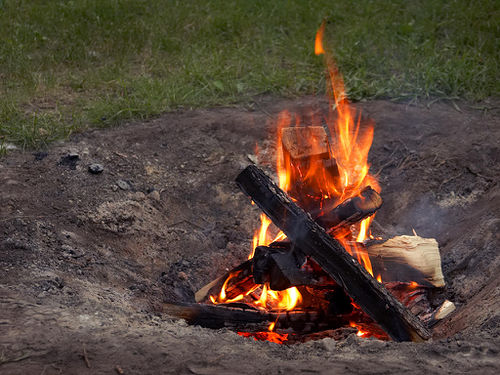Earth Pit Kiln: Difference between revisions
(added paragraph: downside) |
(edits to section ==Downsides of Pit Kiln==) |
||
| Line 5: | Line 5: | ||
A similar type of pyrolysis is achieved by the more sophisticated [[Kon-Tiki Kiln]]. | A similar type of pyrolysis is achieved by the more sophisticated [[Kon-Tiki Kiln]]. | ||
In addition to char production, the heat generated in the pit kiln can be used for other products, such as pottery and other ceramics. These products may or may not be comparable in quality to those from a dedicated firing. | |||
==Downsides of Pit Kiln== | |||
One of the downsides of the earth pit kiln is that the surrounding soil may soak up a lot of the heat, especially if the soil is cold or moist. Then the temperature at the bottom of the burn may stay too low to produce biochar of optimal quality (should be at least 400-450C°, better to have higher temperature well above 550-600°C). This may not be a problem if you are charring a large amount of material so that the burn lasts a long time, allowing the surrounding soil to heat up sufficiently. The [[Kon-Tiki Kiln]] avoids this whole problem. The other downside is obviously that the pit is labor-intensive to create. The hole is not transportable, whereas the [[Kon-Tiki Kiln]] can be transported wherever your biomass is. | |||
==Links== | ==Links== | ||
Revision as of 21:03, 18 April 2017
One of the simplest ways of turning biomass into charcoal is the “earth pit kiln”. It turns out that it also gives a very clean burn that allows for the production of high-quality biochar. It is less useful for making traditional charcoal. This is because most of the volatiles (gases, liquids, tars, etc. - basically, pyrolysis oil) are driven off and burned by this method and therefore lost from the energy content.
A similar type of pyrolysis is achieved by the more sophisticated Kon-Tiki Kiln.
In addition to char production, the heat generated in the pit kiln can be used for other products, such as pottery and other ceramics. These products may or may not be comparable in quality to those from a dedicated firing.
Downsides of Pit Kiln
One of the downsides of the earth pit kiln is that the surrounding soil may soak up a lot of the heat, especially if the soil is cold or moist. Then the temperature at the bottom of the burn may stay too low to produce biochar of optimal quality (should be at least 400-450C°, better to have higher temperature well above 550-600°C). This may not be a problem if you are charring a large amount of material so that the burn lasts a long time, allowing the surrounding soil to heat up sufficiently. The Kon-Tiki Kiln avoids this whole problem. The other downside is obviously that the pit is labor-intensive to create. The hole is not transportable, whereas the Kon-Tiki Kiln can be transported wherever your biomass is.
